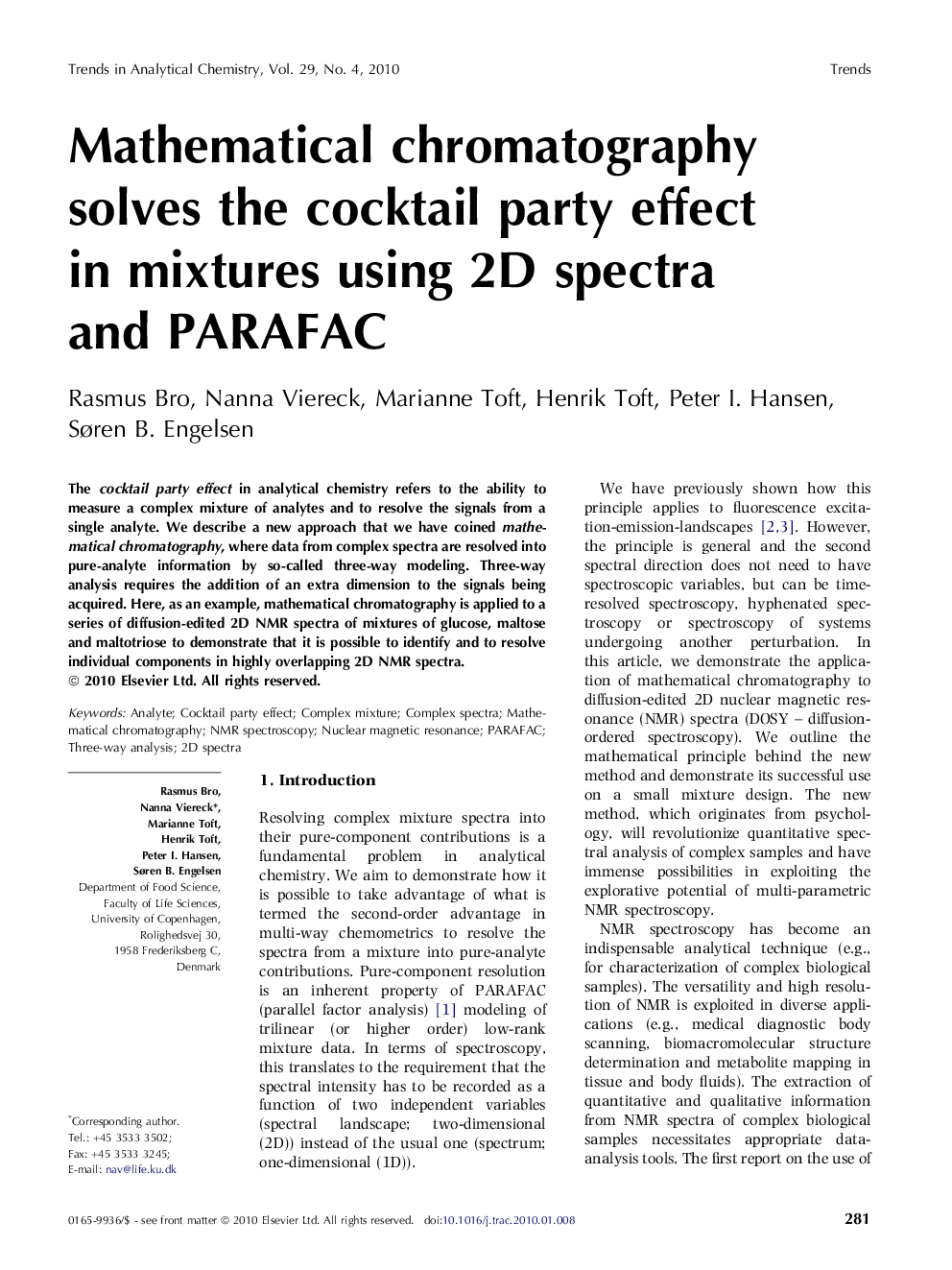| Article ID | Journal | Published Year | Pages | File Type |
|---|---|---|---|---|
| 1248294 | TrAC Trends in Analytical Chemistry | 2010 | 4 Pages |
Abstract
The cocktail party effect in analytical chemistry refers to the ability to measure a complex mixture of analytes and to resolve the signals from a single analyte. We describe a new approach that we have coined mathematical chromatography, where data from complex spectra are resolved into pure-analyte information by so-called three-way modeling. Three-way analysis requires the addition of an extra dimension to the signals being acquired. Here, as an example, mathematical chromatography is applied to a series of diffusion-edited 2D NMR spectra of mixtures of glucose, maltose and maltotriose to demonstrate that it is possible to identify and to resolve individual components in highly overlapping 2D NMR spectra.
Keywords
Related Topics
Physical Sciences and Engineering
Chemistry
Analytical Chemistry
Authors
Rasmus Bro, Nanna Viereck, Marianne Toft, Henrik Toft, Peter I. Hansen, Søren B. Engelsen,
